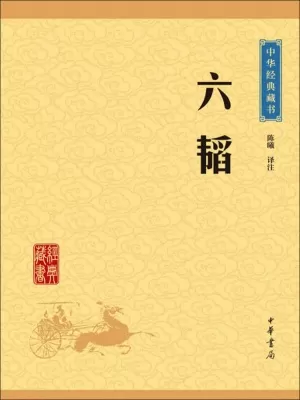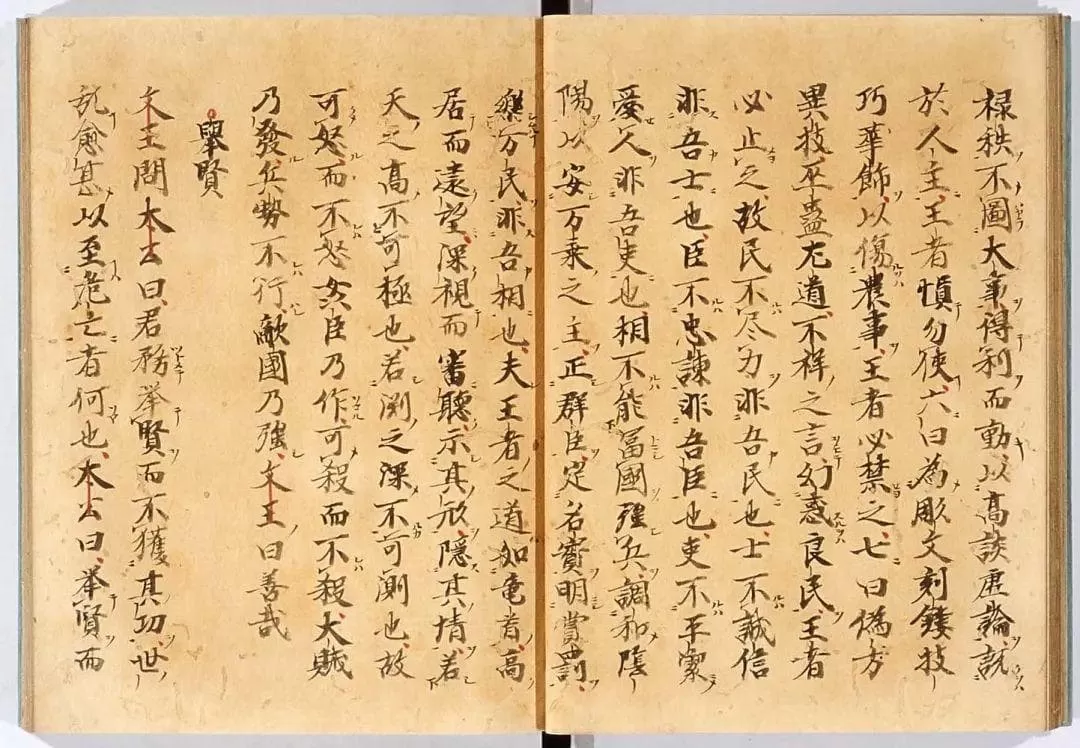
The Six Strategies (Liu Tao), traditionally attributed to Jiang Wang (Tai Gong), is a military classic extant in 60 chapters and approximately 20,000 characters, divided into six volumes: Civil Strategy (Wen Tao), Military Strategy (Wu Tao), Dragon Strategy (Long Tao), Tiger Strategy (Hu Tao), Leopard Strategy (Bao Tao), and Canine Strategy (Quan Tao). This encyclopedic work covers governance, military strategy, and logistics. Civil Strategy focuses on statecraft and national prosperity, Military Strategy on defeating powerful enemies and conquering the realm, Dragon Strategy on military organization and operations, Tiger Strategy on weaponry and tactics, Leopard Strategy on battlefield adaptability, and Canine Strategy on combined arms (chariots, cavalry, and infantry). It comprehensively addresses pre-Qin military thought and practice.
By the Han dynasty, the text had gained prominence as a manual of stratagems and tactics, revered by rulers and generals. During the reign of Emperor Shenzong of the Northern Song Dynasty, it was included in the Seven Military Classics (Wujing Qishu), alongside works such as The Art of War and Wuzi, cementing its status as a foundational military text. Modern editions of the Six Strategies derive from this compilation. From the Song and Ming dynasties onward, the text was repeatedly reprinted, annotated, and studied, with numerous commentaries and interpretations emerging. However, interest waned during the late Qing period as traditional military scholarship declined, and the Six Strategies fell into obscurity until its revival in the 1980s. Over the past four decades, critical editions of the Seven Military Classics—including facsimiles, annotated versions, modern translations, and foreign-language adaptations—have been widely published, with standalone editions of the Six Strategies becoming a well-known classic of traditional Chinese culture.
Traditionally ascribed to Tai Gong Wang (Lü Shang or Jiang Ziya) of the early Zhou dynasty, the text is structured as dialogues between Tai Gong and Kings Wen and Wu of Zhou. The Book of Han·Treatise on Literature (Hanshu·Yiwen Zhi), a catalog of the Western Han imperial library, records a related work titled Tai Gong with 237 chapters: "81 chapters on Strategies (Mou), 71 on Discourses (Yan), and 85 on Military Affairs (Bing)." The historian Ban Gu annotates, "Lü Wang, revered as Zhou's Master and Tutor (Shi Shangfu), was a man of profound wisdom."
The authenticity of the Six Strategies (Liu Tao) has been debated for millennia. The Book of Han·Treatise on Literature (Hanshu·Yiwen Zhi) records two entries potentially related to the extant text:
A Confucian text titled Six Chapters of Zhou History (Zhou Shi Liu Tao), noted by the Tang scholar Yan Shigu as "the same as the current Six Strategies," with the character Tao (弢) interchangeable with Tao (韬).
A Daoist compilation Tai Gong in 237 chapters, divided into Strategies (81 chapters), Discourses (71 chapters), and Military Affairs (85 chapters).
The Book of Sui·Treatise on Classics and Books (Suishu·Jingji Zhi) further lists Tai Gong’s Six Strategies in five volumes, attributing it to Jiang Wang, the mentor of King Wen of Zhou. While scholars like Ruan Xiaoxu (Liang dynasty), Wei Zheng, Li Yanshou, and Yan Shigu (Tang dynasty) accepted this Zhou-era authorship, the Tang scholar Kong Yingda dissented, declaring it "a later creation."
From the Song dynasty onward, skepticism grew. By the Republican era, 23 scholars—including Liu Shu (Comprehensive Mirror Outlying Records), Chao Gongwu (Annotated Bibliography of the Junzhai Studio), and Liang Qichao (Intellectual History of the Past 300 Years)—systematically argued against its Zhou origins. Their consensus holds that:
The Zhou Shi Liu Tao mentioned in the Hanshu was a Confucian text, unrelated to the military Six Strategies.
The received Six Strategies is a pseudepigraphon, likely compiled between the Warring States (475–221 BCE) and Wei-Jin periods (220–420 CE), reflecting evolving military thought rather than Zhou dynasty origins.
The Six Strategies (Liu Tao) profoundly shaped military thought across East Asia. Historical figures such as Zhang Liang (strategist for Han Gaozu), Liu Bei (Shu Han emperor), Zhuge Liang (renowned strategist), and Sun Quan (Eastern Wu emperor) studied and applied its teachings. The Tang military treatise Li Weigong’s Dialogues (Li Weigong Wendui) frequently cites it, and post-Tongdian military writings of the Tang dynasty heavily drew upon its principles. During the Song, Ming, and Qing dynasties, scholars produced over 100 commentaries and annotated editions, securing its status as a cornerstone of Chinese military scholarship.
As one of the Seven Military Classics (Wujing Qishu) canonized in the Song dynasty, the Six Strategies synthesized pre-Qin military theory. Its innovative integration of governance and warfare, alongside detailed records of ancient military organization, weaponry, and communication systems, endowed it with unparalleled theoretical and historical value. Translated into Tangut script during the Western Xia dynasty, it circulated widely among ethnic groups, further cementing its cultural reach.
Commentarial Tradition and Editions
From the Tang dynasty onward, nearly 100 annotated editions emerged, peaking in the Ming with over 40 dedicated studies. Key surviving editions include:
Song dynasty: He Qufei’s revised Seven Military Classics (Yuanfeng era, 1078–1085), Zhu Fu’s collated edition.
Ming dynasty: Shi De’s Revised Seven Military Classics (1531).
Qing dynasty: Siku Quanshu manuscript (1770s), Commercial Press’s Sibu Congkan facsimile of a Song copy.
Republican era: Saoyeshanfang’s lithographic edition of the Baizi Quanshu (Complete Works of the Hundred Philosophers).
Global Dissemination
Japan: The Ashikaga School (a military academy for training advisors) during the Sengoku period (1467–1615) adopted the Six Strategies and Three Strategies (San Lue) as core texts. Over 30 Japanese studies and translations emerged by the Edo period.
Europe: The first Western translation, part of L’Art Militaire des Chinois (1772, Paris), introduced the text to European audiences.
Korea: From the reign of Taejo (1392–1398), the Six Strategies became essential for military examinations. Its application during the Imjin War (1592–1598) against Japanese invasions bolstered Joseon’s military tactics and reinforced Sino-Korean cultural ties, exemplifying the text’s role in shaping East Asian geopolitics.
Modern Translations: Available in Japanese, French, Korean, Vietnamese, English, Russian, and other languages, the Six Strategies remains a global touchstone for classical military philosophy.

Provides The Most Comprehensive English Versions Of Chinese Classical Novels And Classic Books Online Reading.
Copyright © 2025 Chinese-Novels.com All Rights Reserved
